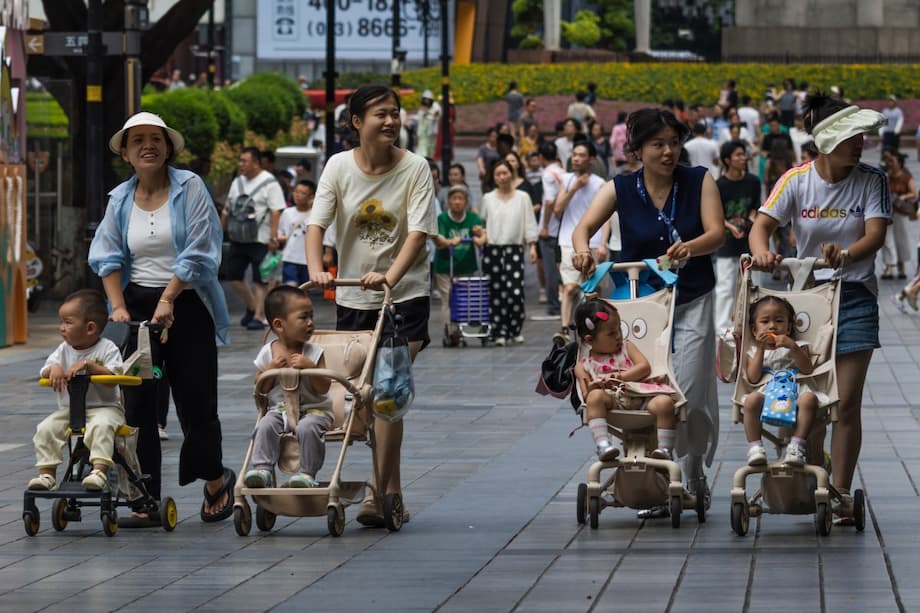China’s Demographic Turning Point: A Looming Economic Challenge
China, the world’s second-largest economy, is facing a demographic crisis that threatens to reshape its economic future. For the first time in six decades, China’s population is shrinking, and the effects are rippling through its labor force, social safety net, and long-term growth prospects. The country’s birth rate has plummeted to historic lows, while the proportion of elderly citizens is rising rapidly. These trends are not unique to China, but their speed and scale—compounded by the legacy of the one-child policy and limited immigration—make China’s situation especially acute.
- China’s Demographic Turning Point: A Looming Economic Challenge
- Why Is China’s Population Shrinking?
- Economic Consequences: Growth, Labor, and the Silver Economy
- Policy Responses: Can China Reverse the Trend?
- Global Ripple Effects: How China’s Demographics Affect the World
- Can China Get Rich Before It Gets Old?
- In Summary
Experts warn that unless China can adapt to these new realities, its economic ambitions could be severely undermined. Policymakers are scrambling to respond, but the effectiveness of their measures remains uncertain. The stakes are high, not just for China, but for the global economy that has come to rely on Chinese growth and demand.
Why Is China’s Population Shrinking?
The roots of China’s demographic crisis are deep and multifaceted. The most immediate cause is a dramatic decline in the birth rate. In 2024, China’s fertility rate was estimated at just 1.2 births per woman—far below the replacement level of 2.1 needed to maintain a stable population. In some urban centers like Shanghai, the rate has dropped as low as 0.6. This means that, for every newborn, there are now six deaths, a trend that, if unchecked, will accelerate population decline.
The origins of this trend can be traced back to the one-child policy, introduced in 1979 to curb population growth. While successful in reducing birth rates, the policy also created unintended consequences: a rapidly aging society, a gender imbalance due to son preference, and millions of undocumented children (heihaizi) who lack access to basic services. Even after the policy was relaxed—first to two children in 2016 and then to three in 2021—birth rates continued to fall, as economic pressures and changing social attitudes deterred couples from having more children.
Other factors include rising living costs, urbanization, delayed marriage, and increased educational and career opportunities for women. The COVID-19 pandemic further exacerbated these trends by increasing economic uncertainty and discouraging family formation.
Economic Consequences: Growth, Labor, and the Silver Economy
The demographic shift is already having profound effects on China’s economy. A shrinking and aging population means fewer workers, higher dependency ratios, and mounting pressure on pension and healthcare systems. According to Oxford Economics, China’s potential output growth could fall to half its 2020s level by mid-century, dropping below 4 percent in the 2030s and under 3 percent in the 2040s—down from double-digit rates during the boom years of the 2000s and early 2010s. By the 2050s, growth could slow to just above 2 percent annually.
China’s old-age dependency ratio—the number of people aged 65 and over relative to the working-age population—stood at 21 percent in 2024, up from 13 percent in 2013. By 2035, over 450 million people (nearly a third of the population) will be over 60. This means a smaller base of workers will be supporting a growing number of retirees, straining the country’s limited social safety net and threatening the sustainability of its pension system. The fiscal burden is immediate: the pension shortfall is projected to reach nearly 12 percent of national labor income by 2035.
As the labor force contracts, industries that rely on young, low-cost workers—such as manufacturing and construction—will face rising wages and potential labor shortages. At the same time, the so-called “silver economy” is expanding, creating new opportunities in healthcare, eldercare, pharmaceuticals, and medical devices. By 2030, China’s eldercare market is projected to reach trillions of yuan, attracting both domestic and foreign investment.
Impact on Consumption and Innovation
Demographic changes are also reshaping consumer demand. With fewer children, sectors like childcare, education, and toys are shrinking, while spending on healthcare, personal care, and services for the elderly is rising. Interestingly, research published in Nature suggests that the demographic dividend shift—moving from a focus on labor quantity to population quality—has actually increased per capita consumption, especially among rural residents. This is because disposable incomes are rising and consumption patterns are upgrading, with more spending on enjoyment and development rather than just survival.
However, there are concerns that an aging workforce could stifle innovation. The most productive and innovative years tend to be between ages 30 and 40, and as the population ages, the share of workers in this bracket will decline. This could slow technological progress and reduce China’s global competitiveness.
Policy Responses: Can China Reverse the Trend?
Recognizing the risks, Chinese policymakers have rolled out a range of measures to boost fertility and adapt to an aging society. These include:
- Ending the one-child policy and allowing up to three children per family
- Offering cash subsidies (3,600 yuan per child under three, with some provinces offering much more for additional children)
- Expanding maternity and paternity leave, with some regions considering up to 150 days of maternity leave
- Streamlining marriage registration and offering incentives for couples to marry and have children
- Investing in childcare, eldercare, and private pension schemes
- Gradually raising the retirement age (expected to reach 65 by 2035)
- Promoting automation, AI, and robotics to offset labor shortages
Despite these efforts, results have been modest. Experts caution that the subsidies and incentives are too small to offset the high costs and social pressures associated with raising children. Anti-marriage and anti-childbearing sentiments are intensifying, especially among urban youth, and many women cite career concerns and lack of support as reasons for delaying or forgoing motherhood. The government’s own research suggests that even under the most optimistic scenarios, the share of elderly will continue to rise, peaking at 36 percent by 2084.
Learning from Japan: Automation and Innovation
China is not the first country to face these challenges. Japan’s experience offers both cautionary tales and potential solutions. Faced with a similar demographic crunch, Japanese companies invested heavily in automation and robotics, maintaining productivity despite a shrinking workforce. They also pioneered eldercare technologies, such as robotic assistants and AI-driven healthcare monitoring, to meet the needs of an aging population.
China is already a global leader in high-tech manufacturing and AI, and policymakers are encouraging further investments in these areas. By fostering innovation in eldercare and healthcare, China could turn demographic challenges into economic opportunities. However, this will require not just technological advances, but also policy reforms to support families, improve the social safety net, and address urban-rural disparities in healthcare and infrastructure.
Global Ripple Effects: How China’s Demographics Affect the World
China’s demographic crisis is not just a domestic issue; it has far-reaching implications for the global economy. As the world’s largest exporter and a key driver of global demand, changes in China’s population structure will affect everything from commodity prices to international trade patterns.
As the workforce shrinks and ages, China’s demand for imports—especially from countries like Brazil, South Africa, Thailand, and Vietnam—could decline, impacting global supply chains and reducing opportunities for exporters. Multinational corporations that have relied on China’s vast consumer market may see slower growth and face new challenges in adapting to an older, more selective customer base.
At the same time, the rise of the silver economy creates opportunities for foreign businesses in healthcare, pharmaceuticals, medical devices, and education. British and European firms, for example, are already partnering with Chinese companies to offer vocational training, eldercare solutions, and AI-driven products tailored to an aging market.
Can China Get Rich Before It Gets Old?
One of the most pressing questions is whether China can achieve high-income status before its demographic window closes. Unlike Japan and South Korea, which aged after reaching developed-country status, China is facing rapid aging at a much lower level of per capita wealth. This raises the risk of getting old before getting rich—a scenario that could limit China’s ability to invest in innovation, social services, and global influence.
Scholars and policymakers are divided on whether China can overcome these challenges. Some argue that effective reforms—such as improving education, raising the retirement age, strengthening the social safety net, and opening up to immigration—could help China avoid a demographic trap. Others worry that structural issues, such as low levels of education among rural workers and persistent gender inequality, will be harder to overcome.
What is clear is that demography is not destiny. The choices China makes now—in policy, technology, and social investment—will determine whether it can sustain growth, maintain social stability, and continue to play a leading role in the global economy.
In Summary
- China’s population is shrinking and aging rapidly, driven by low birth rates and the legacy of the one-child policy.
- The demographic crisis threatens to slow economic growth, shrink the labor force, and strain pension and healthcare systems.
- Government policies to boost fertility and adapt to aging have had limited success so far, with subsidies and incentives proving insufficient to reverse the trend.
- Automation, AI, and innovation in eldercare offer potential solutions, but require significant investment and policy reform.
- China’s demographic shift will have global consequences, affecting trade, investment, and business opportunities worldwide.
- Whether China can get rich before it gets old depends on its ability to adapt, reform, and innovate in the face of unprecedented demographic change.












